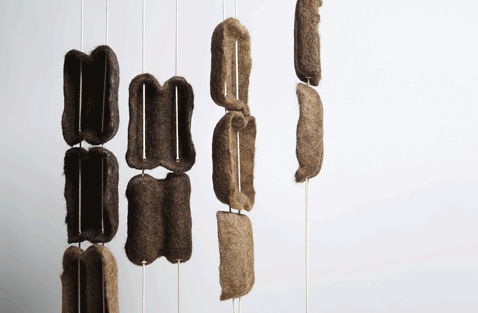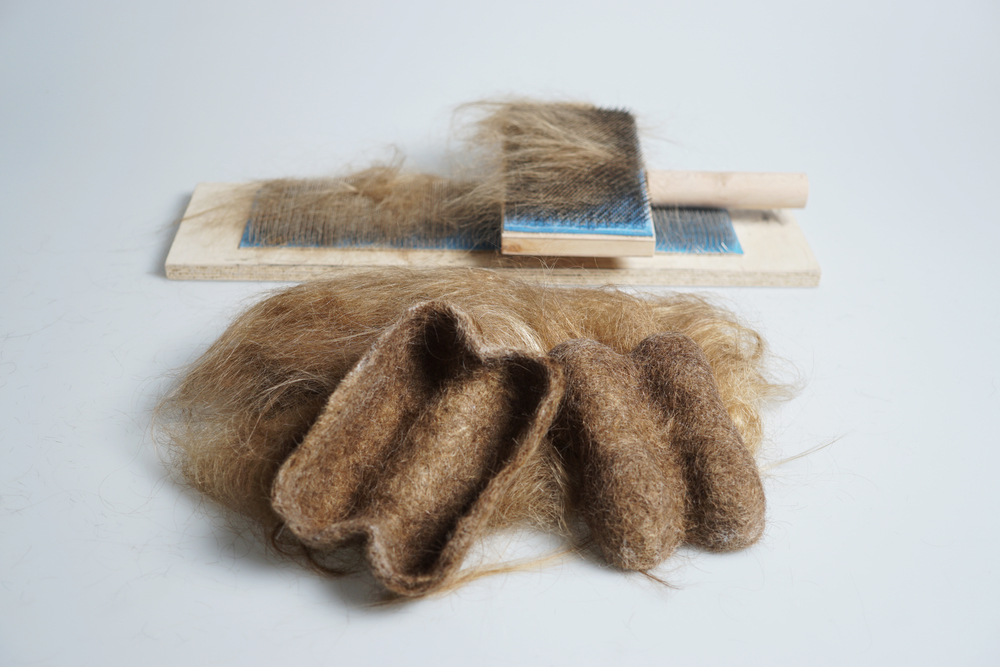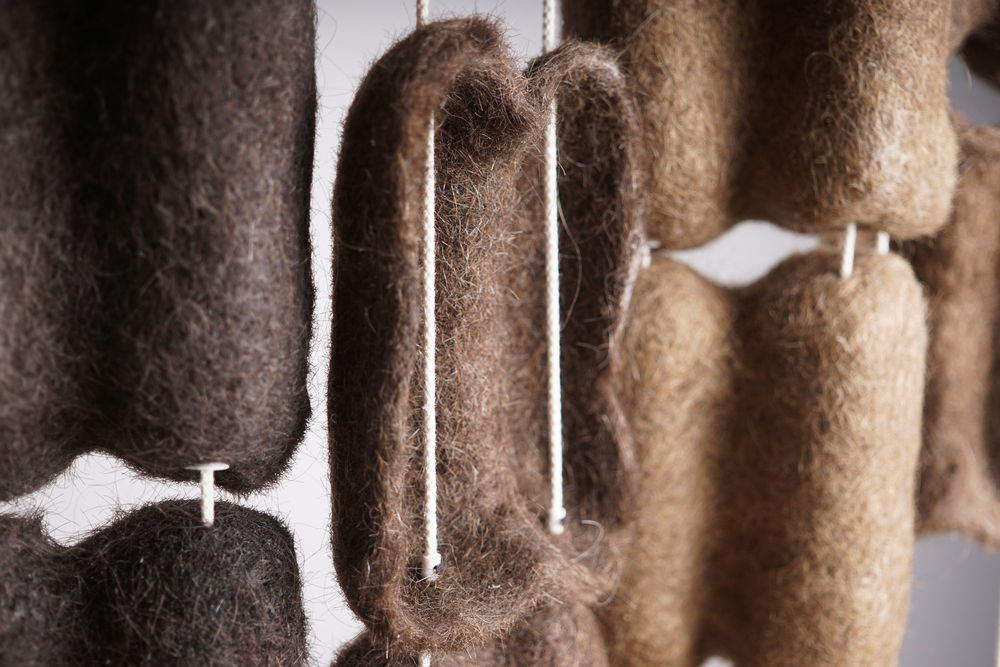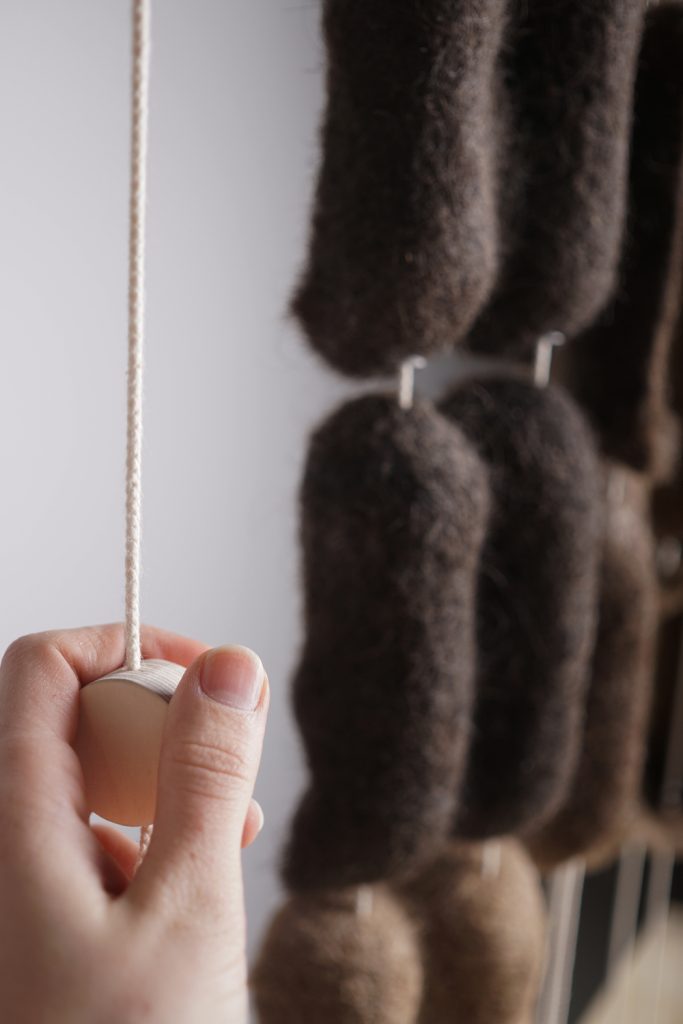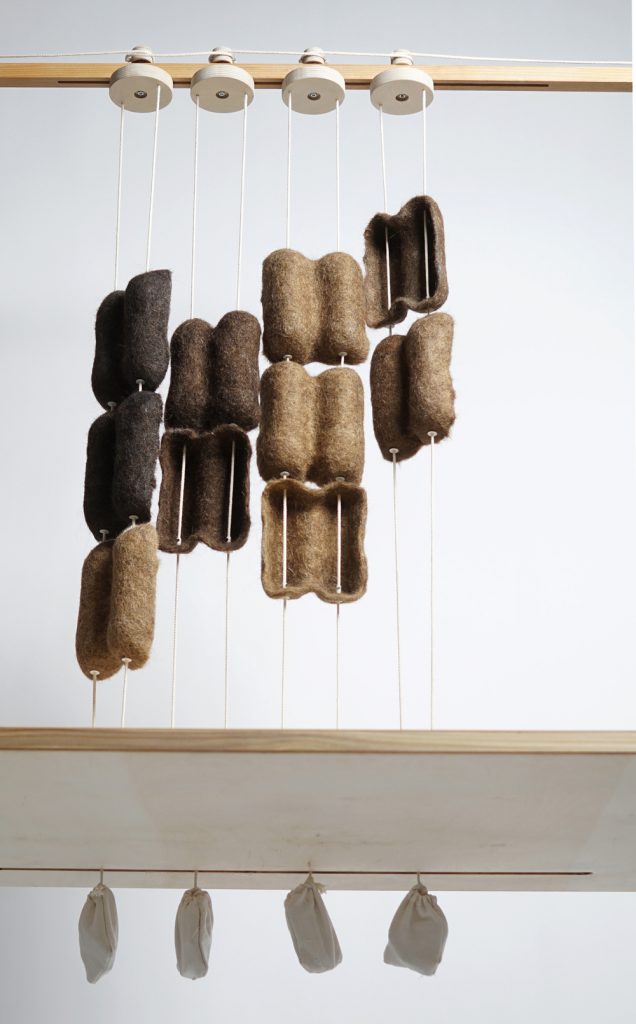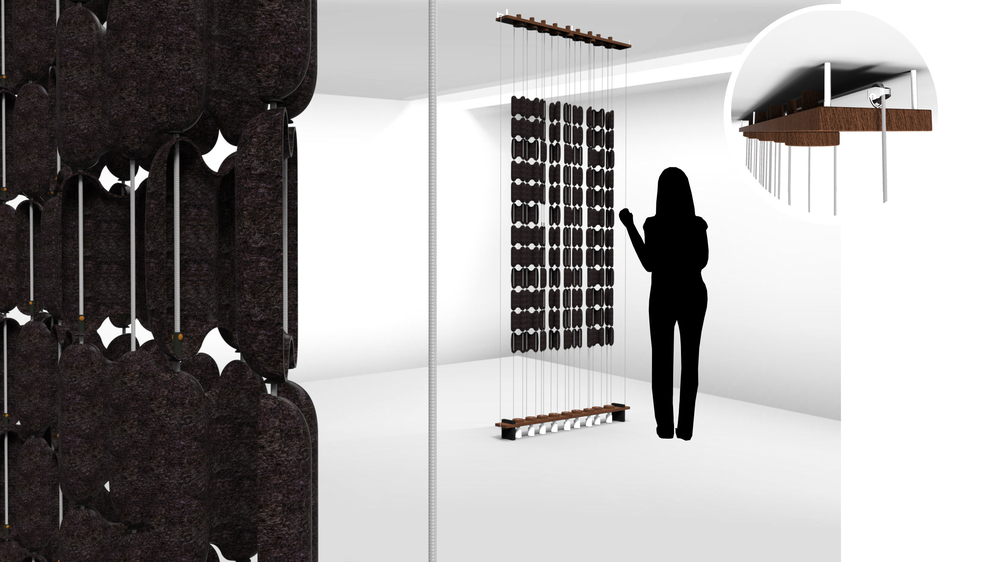Honorable Mention
Hairy Times
Re-use of human hair in product design to support circularity and address climate change
Solution
Re-think resources. Human hair is generally seen as waste and unattractive the moment it is cut off. It is getting burned and releases toxins into the atmosphere because it takes months or years to biodegrade. There is a way to protect people while using the locally available hair and its properties, built of the protein keratin, to design new products. This prototype is a human-hair based panel that can be installed for insulation, acoustic- or air quality enhancing purposes.
Project Description
Inspired by the concepts of ‚Biomimicry’ and ‚Cradle to Cradle‘ this project focuses on the material human hair and how we can use its valuable properties to support circular and climate conscious ways of producing and using our products. Consisting of keratin, hair is known to filter oil, particulate matter, chemicals, store heat and absorb sound. It can therefore be a perfect fit to design products that solve a variety of existing problems such as particulate matter, or noise insulation. While animal wool is well known as a resource, human hair is generally considered as waste once cut off. Also, it is discarded or burnt, thus releasing toxic gases into the atmosphere, which shouts for a C2C concept, where human hair is social collected at hairdressers. We can fight climate change with the creative re-use of this valuable resource, which is available in every part of the world, while considering the difficulties and concerns coming up with human hair as a resource.
The dominant category of this project is Products. The human-hair based panel is a physical object that has to be produced and treated before it can be installed for its purpose. Additionally, a Design systems perspective can also be taken into account, as a holistic system has to be designed where the human hair that is used for production is collected in a socially responsible way and also reuse/recycling of the product is enabled. A cradle to cradle approach in the product design is core to this project.
Overview of the Solution
My project focuses on complex ecosystems which are the foundation for a safe and good life of humanity and its future generations on this planet. Taking inspiration from nature’s principle‚ maintain physical integrity‘ I based my design on the sustainability concepts of Biomimicry and Cradle to Cradle. My research led me to a globally abundant material: keratin. It appears in different structures, such as nails, feathers, wool, horn or hair and mainly evolved as a protection mechanism. The resource human hair is completely underutilized and generally seen as waste also unattractive the moment it is cut off. Human hair is getting burned in landfills because it takes months up to years to biodegrade. When burned, it releases many toxins such as sulfur dioxide, ammonia, phenols and carbonyl sulfides into the atmosphere. To protect people from that, hairs and their special properties like filter oil, filter chemicals, provide nutrients, being water repellent, filter particulate matter, store heat, or absorb sound can be used to build new products, inspired by biomimicry.
The main question was thus how to build a product that uses these traits in a circular and socially responsible way. There is a critical history behind the human hair as a resource. Shaving off, and using prisoners hair in world war 2 in Germany, poverty in India leading to sales of hair becoming a billion-dollar industry, or the hair mafia in Venezuela who cuts of hair from people in the middle of the street to sell it at high prices. Ethical concerns around hair collection can be covered, when given voluntarily by individuals and collected by hairdressers. IMAGINE it would just be a material that could be processed like wool. Thinking about our planetary boundaries and shrinking natural resources, we should focus more strongly on the C2C Principle. Human hair is locally available all over the world, and growing one cm per month. In the case of Berlin that means ~ 364.482kg/year, ~ 30.373kg/months, ~7.593kg/week. My solution is a human-hair based panel, designed for a western audience, that can be installed for acoustic insulation, and air quality enhancing purposes, as keratin filters particulate matter. A product that protects humans while being mindful of the environment. A product that takes a wasteful resource and re-uses it to something purposeful, thus including humanity into the cycle and pushing for responsible and circular production and consumption.
PROJECT TEAM
Melissa Kramer
INSTITUTION
University of Applied Sciences Potsdam,
Department of Design, Germany
Category
Product/System
